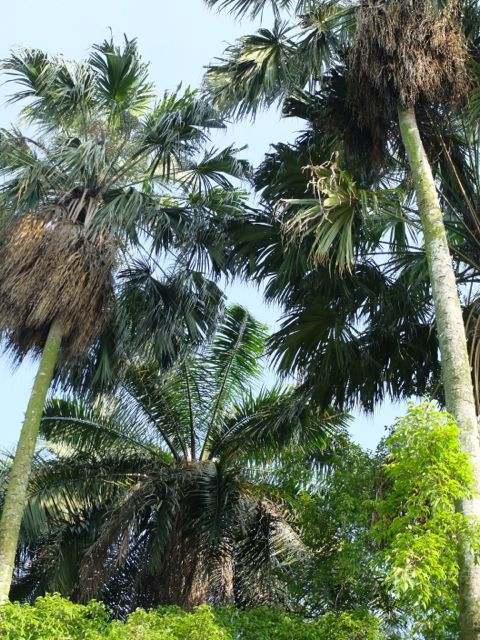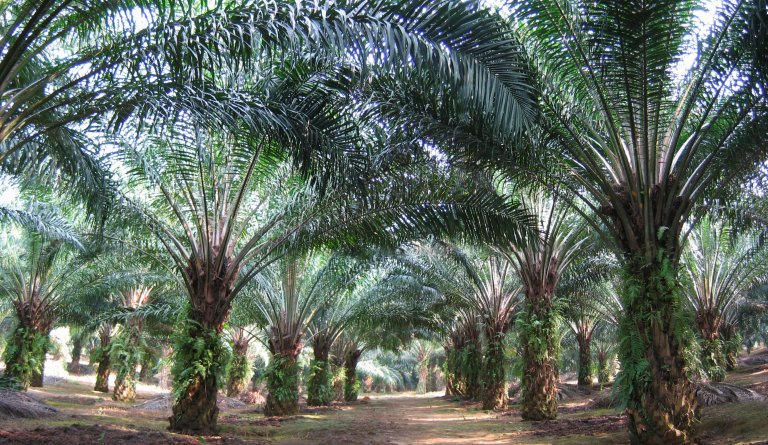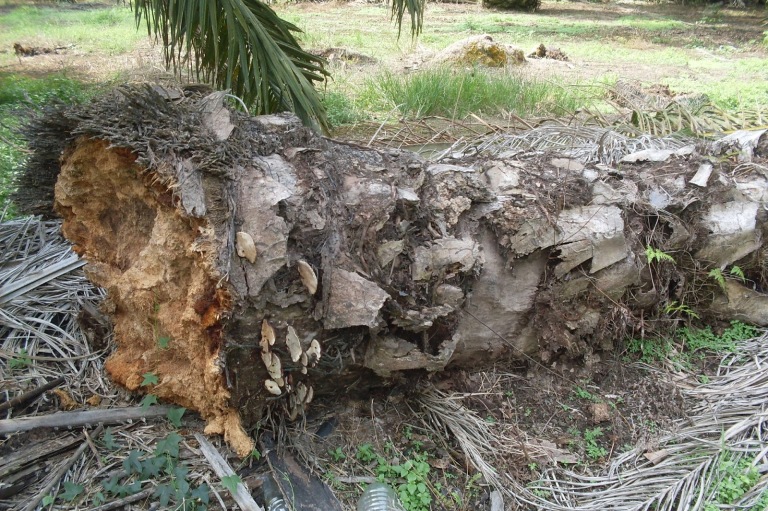About This Tree
ARECAEAE (Palm family)

Oil palm (Kelapa Sawit), also called Macaw-Fat, is originated from West Africa and then introduced to Southeast Asia and South and Central America. It is a single-stemmed tall tree ranging in height from 8 to 20 metres or even more at maturity with some resemblance to Coconut palm (Cocos nucifera). The leaves are pinnate with a length of 3-5 meters that bears 50-60 lanceolate pointed segments. There are short spines on the leaf stem and within the fruit bunch. As Kelapa Sawit is monoecious, therefore the male and female flowers occur separately but on the same tree. The fruits are borne on a large, compact bunch and takes 5-6 months to mature and contains an oily, fleshy outer layer (the pericarp), with a single oil seed (kernel).

Common Uses
Its specific epithet “Elaeis” means oil refers to its role in the production of two kinds of oil, Palm oil and Palm kernel oil. Palm oil comes from the fleshy mesocarp of the fruit whereas Palm kernel oil is extracted from the kernel of endosperm. Palm oil contains saturated palmitic acid, linoleic acid and oleic acid, giving it a higher unsaturated acid content than palm kernel oils. Palm oil is used in the making of soaps, candles, margarine and cooking fats. It is also widely used in tin plate industry where its role is to protect the cleaned iron surfaces before the tin is applied. In addition, it is also used as lubricant, in textile and rubber industries.
Palm kernel oil is similar to coconut oil, with high content of saturated acids, mainly lauric. It is solid at normal temperatures in temperate areas, and is almost colorless, varying from white to slightly yellow. It is used in edible fats and in the making of ice cream and mayonnaise. It is also used in baked goods and confectioneries. Press cake, after extraction of oil from the kernels, used as livestock feed, containing 5-8% oil.
Oil palm is a folk remedy for headaches, cancer and rheumatism
Interesting Facts!
- Malaysia is the largest producer and exporter of palm oil in the world but we are encountering severe problem with fungal infection from Ganoderma species. The infection is not easy to eliminate as fungal spores can stay deep inside the soil for a very long time and cause re-emergent of disease.
- Palm oil requires 10 times less land than other oil-producing crops.
- Each individual piece of fruit on fruit bunch comprises of 45-55% oil.
References:
Click to access KEPATOGENAN_GANODERMA_BONINENSE_PADA_KELAPA_SAWIT.pdf
Sumathi S., Chai S.P., Mohamed A.R. (2008). Utilization of oil palm as a source of renewable energy in Malaysia Renew Sust. Energy Rev., 12: 2404–2421
Corley R.H.V., Tinker P.B. (2003). The Oil Palm. 4th edition. Blackwell Science Ltd. , Oxford.
http://www.fao.org/docrep/005/y4355e/y4355e03.htm
http://www.palmpedia.net/wiki/Elaeis_guineensis
http://greenpalm.org/about-palm-oil/what-is-palm-oil
https://hort.purdue.edu/newcrop/duke_energy/Elaeis_guineensis.html

